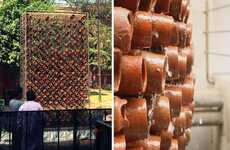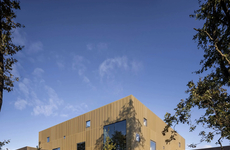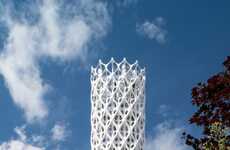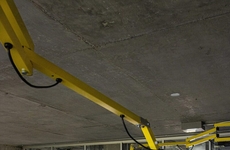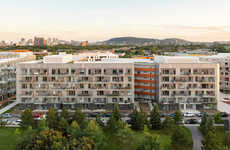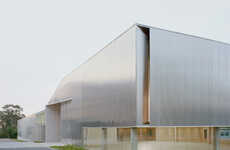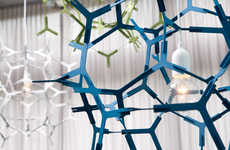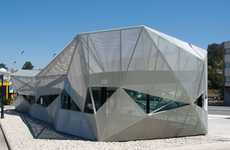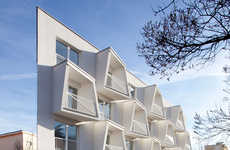
The Institute for Molecular Science by Lyons Architects is Dynamic
Meghan Young — March 29, 2013 — Art & Design
References: lyonsarch.au & fubiz.net
Since students will be buzzing around the halls of the Institute for Molecular Science like a swarm of bees, it is only natural that it would look like a large hive. Of course, the facade of the building is in reality inspired by the their studies and not their actions. Although the exterior has a decidedly honeycomb aesthetic, it is also very molecular in structure.
The Institute for Molecular Science was designed by Lyons Architects, an architectural firm based in Australia. Commissioned by La Trope University, which is located in Melbourne, it is an ambitious project that is estimated to cost a whopping $100 million.
While the outside of the Institute for Molecular Science is incredibly impressive, inside is just as visually striking. The geometric shapes of the windows are reflected within in addition to the use of vibrant colors.
The Institute for Molecular Science was designed by Lyons Architects, an architectural firm based in Australia. Commissioned by La Trope University, which is located in Melbourne, it is an ambitious project that is estimated to cost a whopping $100 million.
While the outside of the Institute for Molecular Science is incredibly impressive, inside is just as visually striking. The geometric shapes of the windows are reflected within in addition to the use of vibrant colors.
Trend Themes
1. Honeycomb-like Architecture - The use of honeycomb structures in architecture can create a visually striking building that is also functional and cost-effective.
2. Molecular Design - Incorporating molecular design into architecture can create unique and innovative structures that reflect the purpose of the building.
3. Geometric Shapes and Vibrant Colors - The use of geometric shapes and vibrant colors within buildings can add to the visual appeal and create a dynamic environment.
Industry Implications
1. Architecture - Architects can incorporate honeycomb structures, molecular design, and bold colors and shapes into their building designs for a dynamic and innovative result.
2. Education - Education institutions can use unique and visually striking architecture to attract students and create a dynamic and engaging learning environment.
3. Construction - Construction companies can explore the use of cost-effective honeycomb structures in their building designs while incorporating unique and innovative design elements.
2
Score
Popularity
Activity
Freshness


